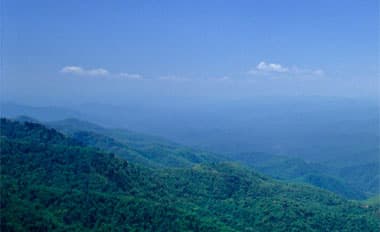Sizing-up Finishing Challenges
- December 10, 2014
- •
- by lwinkler
Figure in wood…
…is a general purpose term used to designate various appearance characteristics that develop through either the normal growth of a tree, external influences on a tree, or even a particular method of removing veneer from a log. While figure is certainly desirable because of its individual beauty and elegance, it may also present tricky finishing challenges.
Interlocked grain and wavy (or curly) grain on a veneer surface produce grain patterns ranging from ribbon striped to cross fire to mottled. If any of these features are present, the veneer knife will pass through the grain in that region producing an alternating pattern of open, more porous areas adjacent to the normally expected flat grain surfaces. Because the cell end openings are present on the surface, end grain regions will absorb more finishing material than adjacent regions, leaving a dull, washed out appearance sometimes referred to as “starved.” American black cherry, for example, develops an inordinate amount of end grain mottled figure, but it is by no means the only species to exhibit this characteristic.
Even growth conditions can present finishing challenges. If, for example, a hardwood tree is leaning, or if it grows on a sharp incline, it will tend to develop growth rings that are more egg shaped than circular. In typical hardwood species, the pith of the tree will be on the narrower, downhill side of the ellipse instead of in the center as it would be under normal growth conditions. Growth ring width on the “uphill” side of the pith will be wider than normal to counteract the effects of gravity. Wood in this condition is said to be in tension. Tension wood does not machine well due to its fiberous structure which tends to rupture rather than cut cleanly. This leaves a fuzzy surface that absorbs finishing material unevenly.
So, is there anything we can do to counter the effects of grain variation?
Glue sizing or wash coating will enhance the warmth and natural beauty of the mottled figure in the plain sliced cherry surface shown here, and in the heavy cross figure in the quarter sliced sapeli surface shown below.Glue sizing is a long-standing practice of applying a light coat of a very dilute solution of glue and water to a wood surface prior to sanding. This combination of glue and water raises and stiffens any loose fibers so that the first sanding step in the finishing operation removes them, leaving a surface with absorption characteristics more like that of unfigured wood. In some instances, glue sizing may retard the development of lateral checks that occasionally develop in wood in stressful conditions.
Wash coating works in much the same way, except that the mixture combines lacquer or sanding sealer rather than glue and water. The wash coat is simply sprayed on and allowed to dry before the first sanding step in the finishing procedure is done. The wash coat locks down the loose fibers and seals off the open grain on the wood surface in the same manner as glue sizing.
In closing…
Either of these methods are a valuable step to provide a superior finish with both fine hardwoods and softwoods. They are certainly more involved than typical factory processes, but the resulting well-defined, deep rich beauty of natural wood characteristics will make it all worthwhile!
All my best!
Want to get Ang’s newsletter directly to your mailbox quarterly? Sign-up below! Or subscribe to our RSS Feed for all Columbia Forest Products news.
[contact-form][contact-field label=’Name’ type=’name’ required=’1’/][contact-field label=’Address’ type=’text’ required=’1’/][contact-field label=’City’ type=’text’ required=’1’/][contact-field label=’State’ type=’text’ required=’1’/][contact-field label=’Zip Code’ type=’text’ required=’1’/][contact-field label=’Company’ type=’text’/][contact-field label=’Email’ type=’email’ required=’1’/][contact-field label=’Phone ‘ type=’text’ required=’1’/][contact-field label=’Comment’ type=’textarea’/][/contact-form]




